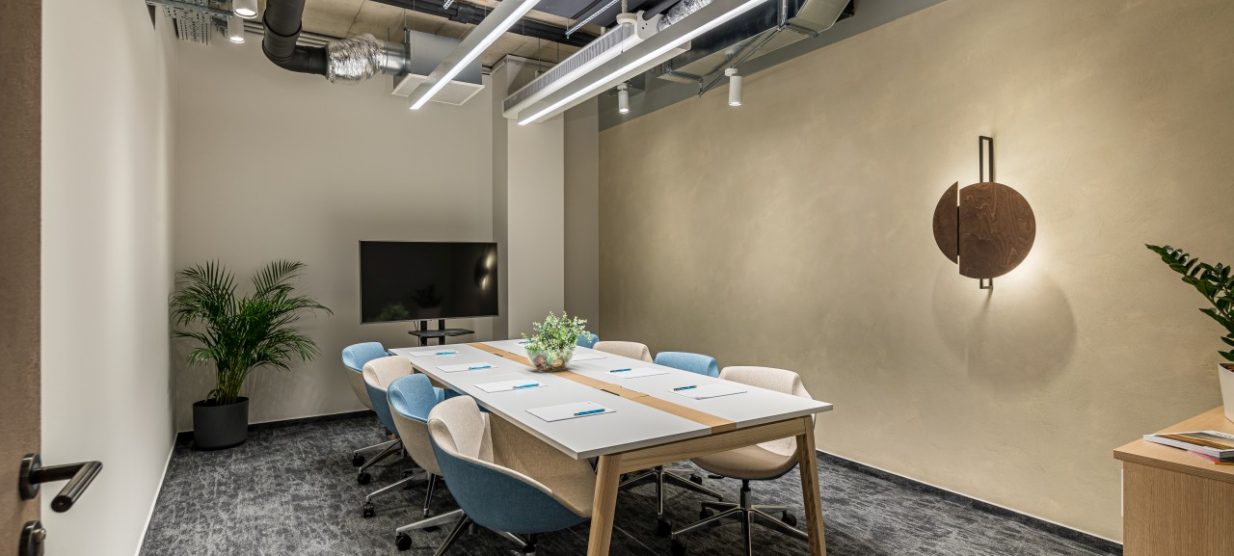Why Hybrid Office Models Are Here to Stay
Why Hybrid Office Models Are Here to Stay
In recent years, the business landscape has undergone significant changes, one of the most profound being the rise of the hybrid office model. This flexible office solution combines the benefits of both remote work and traditional in-office work, offering employees and employers a balanced approach to productivity and work-life balance. As we move forward, it’s becoming increasingly clear that hybrid office models are not just a temporary trend but a permanent fixture in the modern workplace. Here’s why.
The Evolution of the Workplace
The global pandemic accelerated the adoption of remote work, demonstrating that many jobs can be effectively performed from anywhere. However, as companies began to adapt to this new normal, they also recognized the value of in-person collaboration. This realization has led to the hybrid office model, where employees have the flexibility to work both remotely and in the office. According to a study by McKinsey, 52% of workers prefer a hybrid model post-pandemic, highlighting the growing demand for flexible work arrangements.
Benefits of the Hybrid Office Model
Increased Employee Satisfaction and Productivity
One of the primary advantages of the hybrid office model is its positive impact on employee satisfaction and productivity. Employees appreciate the flexibility to choose their work environment, which can lead to improved work-life balance and reduced stress levels. A survey by Buffer found that 97% of remote workers would recommend remote work to others, primarily due to the flexibility it offers. By allowing employees to work where they feel most productive, companies can enhance overall performance and job satisfaction.
Cost Savings for Businesses
Adopting a hybrid office model can also lead to significant cost savings for businesses. With fewer employees in the office at any given time, companies can reduce their real estate footprint and lower overhead costs associated with maintaining a large physical office. Global Workplace Analytics estimates that employers can save an average of $11,000 per year for every employee who works remotely half of the time. These savings can be reinvested in other areas of the business, such as technology and employee development.
Access to a Broader Talent Pool
The hybrid office model enables companies to recruit talent from a broader geographic area, no longer limited by proximity to the office. This expanded talent pool allows businesses to hire the best candidates, regardless of location. According to the Talent Blog on LinkedIn, remote job postings attracted 2.5 times more applications than traditional postings. This flexibility not only helps in attracting top talent but also promotes diversity and inclusion within the workforce.
Addressing Common Challenges
While the hybrid office model offers numerous benefits, it also presents certain challenges that need to be addressed to ensure its success.
Maintaining Company Culture
One of the primary concerns with hybrid work is maintaining a strong company culture. When employees are not physically present in the office, it can be challenging to foster a sense of community and shared values. To overcome this, companies need to be intentional about their culture-building efforts. Regular virtual team-building activities, transparent communication, and opportunities for in-person collaboration can help maintain a cohesive company culture.
Ensuring Effective Communication
Effective communication is crucial in a hybrid work environment. Companies must invest in reliable communication tools and platforms that facilitate seamless interaction between remote and in-office employees. Tools like Slack, Zoom, and Microsoft Teams have become indispensable for hybrid teams, enabling real-time communication and collaboration. Additionally, establishing clear communication protocols and expectations can help prevent misunderstandings and ensure that all team members stay connected.
Managing Performance and Accountability
Another challenge is managing performance and accountability in a hybrid work setting. Without the ability to monitor employees physically, managers may worry about productivity and accountability. To address this, companies should focus on outcomes rather than hours worked. Implementing performance metrics and regular check-ins can help ensure that employees remain productive and accountable, regardless of their location.
The Future of Hybrid Work
As the hybrid office model becomes more prevalent, businesses need to stay ahead of the curve by continually adapting and refining their approach. Here are some key trends and considerations for the future of hybrid work.
Emphasis on Flexibility
Flexibility will remain a cornerstone of the hybrid office model. Companies that offer flexible work arrangements will have a competitive advantage in attracting and retaining top talent. This may include flexible work hours, the option to choose work locations, and the ability to shift between remote and in-office work as needed.
Investment in Technology
To support hybrid work, businesses must invest in technology that enhances productivity and collaboration. This includes not only communication tools but also cybersecurity measures to protect sensitive data. According to a report by Gartner, global spending on remote work technology is expected to reach $332 billion by 2024. Companies that prioritize technology investment will be better positioned to support their hybrid workforce.
Focus on Employee Well-being
Employee well-being will continue to be a priority in the hybrid work environment. Companies need to provide resources and support to help employees manage stress, maintain work-life balance, and stay healthy. This can include mental health resources, wellness programs, and flexible policies that accommodate personal needs.
The hybrid office model is here to stay, offering a flexible and sustainable solution for the modern workplace. By embracing this model, companies can enhance employee satisfaction, reduce costs, and access a wider talent pool. However, to fully realize these benefits, businesses must address the challenges associated with hybrid work and invest in the necessary tools and resources. As we move forward, the hybrid office model will continue to evolve, shaping the future of work in ways that benefit both employees and employers.
By recognizing the enduring benefits and addressing the inherent challenges, businesses can make the hybrid office model a successful and permanent part of their operations. This approach not only meets the evolving needs of today’s workforce but also positions companies for long-term success in a rapidly changing business environment.
Looking for an office just for a day or two per week? At DBH Serviced Office it is possible! Get to know more about this service by clicking here.

Do not hesitate to contact us
Get in touch, if you have any question


